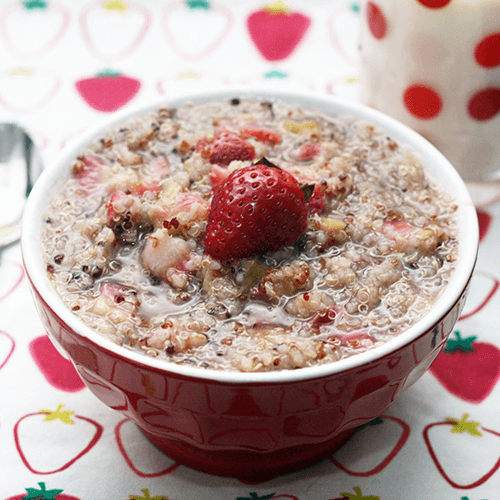Quinoa, which is pronounced ‘keen-wah’ by the way, is renowned for its ability to nourish the body, provide valuable proteins, amino acids, and nutrients, and much more besides.
The American Diabetes Association counts quinoa on its list of “superfoods,” those that are especially good for your health because they are rich in essential vitamins, minerals,
Recently, there has been evidence to suggest that quinoa grains also contain phytoecdysteroids as well as other active compounds, which potentially provide anti-diabetic benefits on the human body.
However, is the wonderful grain known as quinoa really the secret to diabetes remission? Let us take a look, shall we? Below you will find all you need to know about whether quinoa is beneficial for diabetes.
What is Quinoa?
Quinoa is a superfood that has taken the health and fitness industry by storm over the last decade or so. Now, it seems as if you cannot order a healthy meal without it containing quinoa.
Quinoa is indeed incredibly healthy, so it’s undoubtedly a good thing that we are consuming more and more of it.
Compared to many other grains, quinoa has more:
- protein
- antioxidants
- minerals
- fiber
Evidence also suggests that eating more quinoa can help people with diabetes manage their blood sugar levels and possibly prevent other conditions.
It is a nutritional powerhouse that provides vitamins, minerals, fiber, proteins, amino acids, and antioxidants. It is a member of the whole grain family, but the good news for those of you unable to consume gluten is the fact that it’s gluten-free.
Vegans and vegetarians can utilize this grain to increase their protein intakes, but where did it come from and why are we only really hearing about it now?
Well, in South America, quinoa has been a staple part of the South American diet for centuries, if not longer.
Sure, our supermarkets and grocery stores may only have recently started stocking it on their shelves, but that’s only because it has taken it so long to become Westernized.
The ancient Incas used to refer to quinoa as the ‘mother of all grains. It grows naturally in the wild and is found on the Andes.
Conditions there are incredibly harsh, so it’s certainly a hardy little grain. There are over 100 varieties, with black, white and red quinoa being the most popular and most common.
What are the benefits of Quinoa for Diabetes?
Now that we have brought you up to speed with what quinoa is, we now need to take a look at its potential health benefits for diabetes.
Here is a look at how this excellent grain quinoa could potentially help you to better deal with your diabetes and manage your condition.
Quinoa has a low G.I
Quinoa is a source of carbohydrates. Carbohydrates generally have a high Glycaemic Index.
In your body, not every carbohydrate acts the same. Some are digested quickly and cause a sudden spike in insulin, which causes a rapid spike in blood glucose levels.
These are simple carbs, and they’re the last thing a person with diabetes should be eating. Other foods, however, are digested much slower and only create a minor rise in blood glucose levels.
These are low glycaemic index foods and are considered to be much better for people dealing with diabetes. Quinoa has a naturally low glycaemic index, and it is therefore ideal for people dealing with diabetes.
Quinoa is high in fiber
Dietary fiber is extremely beneficial for people dealing with diabetes. Half a cup of quinoa provides 3 grams of fiber, making it a great source of this particular nutrient.
Fiber is beneficial for the treatment of diabetes as it helps to reduce cholesterol and improve your blood sugar levels while helping to keep insulin levels nice and stable. As you know, this is hugely beneficial for people who have diabetes.
Dietary fiber helps to slow down rates of digestion nutrient absorption, meaning that glucose sugars in foods you consume reach your bloodstream much slower than usual.
On top of that, fiber also helps with weight loss as it naturally suppresses your appetite, helping to keep you feeling full for longer. If you feel full for longer, you will be less likely to overeat.
Quinoa is rich in magnesium
Quinoa is packed full of nutrients and essential minerals, with magnesium being particularly prevalent in this grain.
Magnesium is beneficial for a number of reasons, although it is particularly useful for helping to regulate and control blood sugar levels.
Experts have found a direct link between magnesium deficiencies and type-2 diabetes.
Therefore, by increasing your daily magnesium intakes, you are better able to improve your rates of insulin sensitivity and regulate your blood sugar levels.
Quinoa is high in potassium
A further benefit of quinoa is that it is higher potassium than any other grain. It helps to lower blood pressure by balancing out the adverse effects of salt. Your kidneys help to control your blood pressure by controlling the amount of fluid stored in your body.
How to prepare quinoa
The American Diabetes Association recommends picking grains with the highest nutritional value for your carbohydrate servings. Quinoa is a good option.
Your daily or weekly serving may depend on whether you’re using the plate method, glycemic index, or the exchange or gram counting system to keep track of meals. Generally, 1/3 cup of cooked quinoa counts as one carbohydrate serving, or about 15 grams of carbohydrate
Quinoa has a slightly nutty flavor. This can be made stronger by dry roasting it before cooking. Once you’ve cooked it, try adding:
- fruits
- nuts
- veggies
- seasonings
Strawberry Infused Quinoa Recipe
A quick delicious and nutritious bowl full of energy. Ideal for breakfast but can be enjoyed as a snack at any time of the day.
View the recipe.
Conclusion
A healthy diet plays a vital role in diabetes management, and the health benefits of quinoa are plentiful.
While carbohydrates can be a gray area when it comes to diabetes, quinoa has a low glycaemic index, provides a good source of both fiber and protein, and is rich in vitamins and minerals.
Explore More








